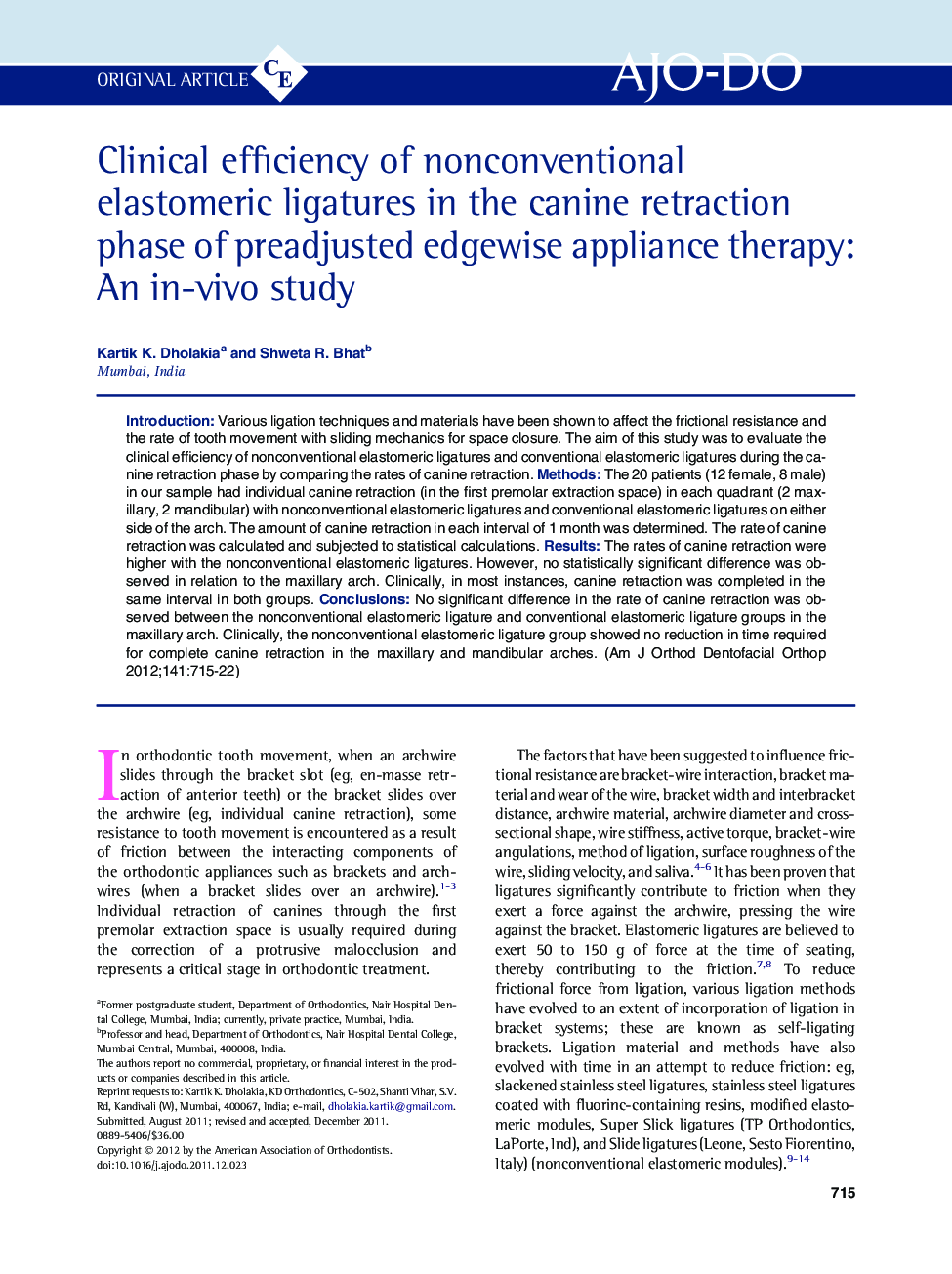| Article ID | Journal | Published Year | Pages | File Type |
|---|---|---|---|---|
| 3116649 | American Journal of Orthodontics and Dentofacial Orthopedics | 2012 | 8 Pages |
IntroductionVarious ligation techniques and materials have been shown to affect the frictional resistance and the rate of tooth movement with sliding mechanics for space closure. The aim of this study was to evaluate the clinical efficiency of nonconventional elastomeric ligatures and conventional elastomeric ligatures during the canine retraction phase by comparing the rates of canine retraction.MethodsThe 20 patients (12 female, 8 male) in our sample had individual canine retraction (in the first premolar extraction space) in each quadrant (2 maxillary, 2 mandibular) with nonconventional elastomeric ligatures and conventional elastomeric ligatures on either side of the arch. The amount of canine retraction in each interval of 1 month was determined. The rate of canine retraction was calculated and subjected to statistical calculations.ResultsThe rates of canine retraction were higher with the nonconventional elastomeric ligatures. However, no statistically significant difference was observed in relation to the maxillary arch. Clinically, in most instances, canine retraction was completed in the same interval in both groups.ConclusionsNo significant difference in the rate of canine retraction was observed between the nonconventional elastomeric ligature and conventional elastomeric ligature groups in the maxillary arch. Clinically, the nonconventional elastomeric ligature group showed no reduction in time required for complete canine retraction in the maxillary and mandibular arches.
